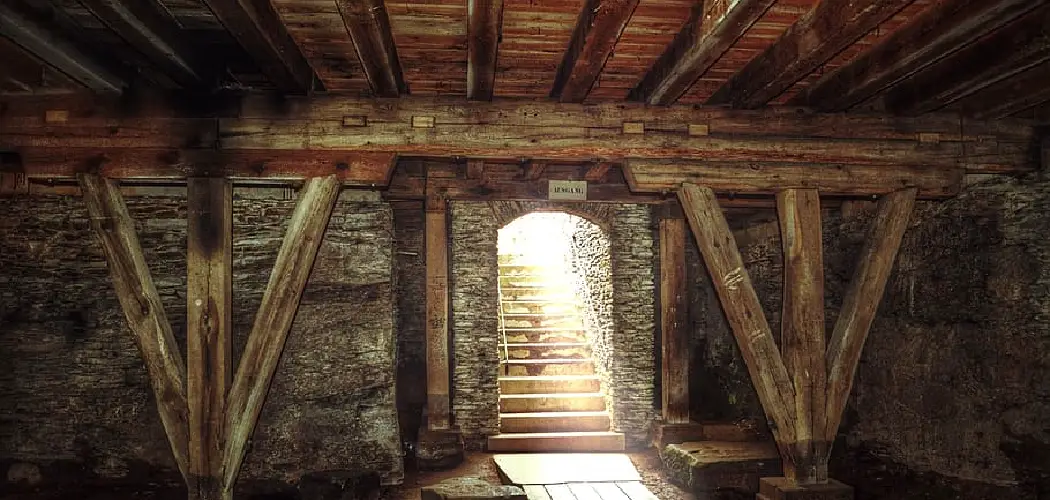Finishing a basement with low ceilings can be a difficult design challenge, but it doesn’t have to mean sacrificing style or character. While one of the main disadvantages of dealing with low ceilings is reducing the feeling of spaciousness, you can use plenty of clever decorating methods to make the most out of your basement’s limited space.
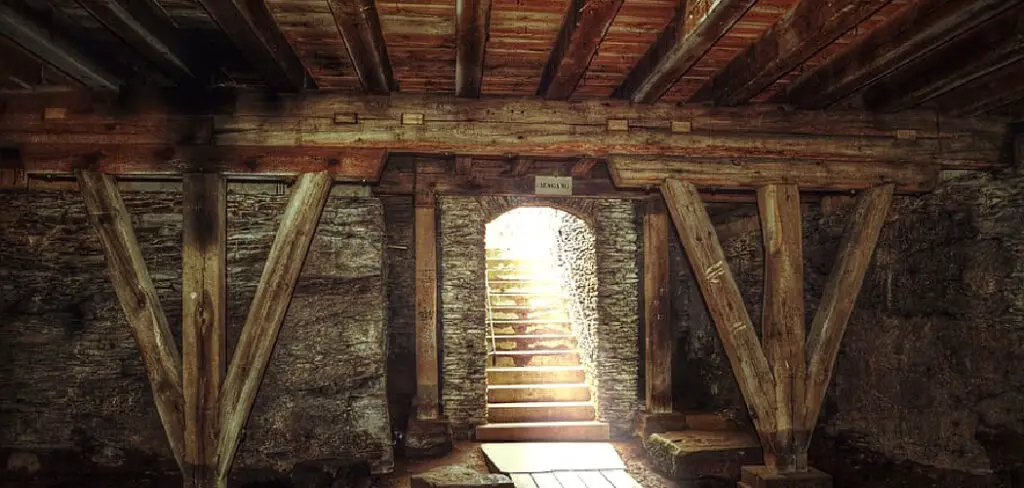
With some strategic ideas and thoughtful planning, you’ll be able to transform your musty cellar into an inviting living area that looks as if it were finished long ago!
In this blog post, we will discuss various tactics to effectively use color, lighting fixtures, and furniture placement so that even in a confined lower level space, those creative juices will start flowing and get you started on making the most out of both form and function. Read on to learn more about how to finish a basement with low ceilings.
What Will You Need?
Before you start your project, it is important to have an inventory of the necessary materials and tools. The following is a list of items that may be required when finishing a basement with low ceilings:
- Drywall panels
- Joint compound
- Taping knives/tools
- Paint brushes and rollers
- Paint
- Ceiling tiles
- Recessed lighting fixtures
- Fan/lighting fixtures
Once you have the above materials ready and organized, start gathering your ideas for how to make the most out of a limited space.
10 Easy Steps on How to Finish a Basement With Low Ceilings
Step 1. Using Color to Maximize Space:
Rather than utilizing light and bright colors, you will want to opt for rich, saturated hues that can make the room appear more spacious. For example, dark blues and greens create a soothing atmosphere that can make the space feel bigger than it really is. Be careful not to use too many colors in a small space as it can become overwhelming.
Step 2. Utilize Recessed Lighting:
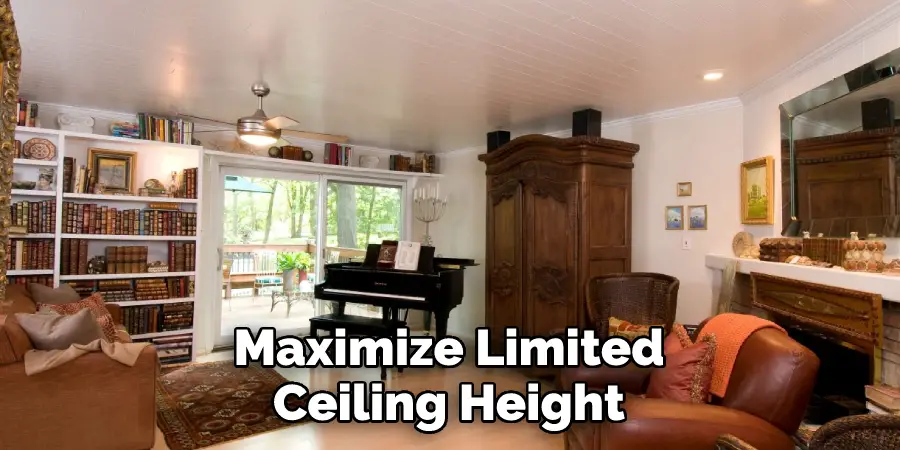
Recessed lighting fixtures are a great way to maximize limited ceiling height and create an inviting atmosphere in your basement. They provide ample illumination and give the illusion of more vertical space by being installed directly into the ceiling rather than hanging from it. As an added bonus, these lights are relatively easy to install and can be found in a variety of sizes and finishes.
Step 3. Choose Low-Profile Ceiling Tiles:
Choose low-profile ceiling tiles (such as acoustic ceilings) that don’t require extra boxes or framing around them to install so as not to take up precious headroom in your low ceiling basement. To maintain an open and spacious feel, try to keep any dropped ceilings or other types of ceiling treatments at least a foot from the highest point. Don’t be afraid to get creative with the design; paint the tiles a different color, and add texture or patterned wallpaper to them if you like.
Step 4. Place Furniture Strategically:
Try to make the most out of your limited space by placing furniture near walls or in corners rather than in the middle of the room. This will create the illusion of more open space and can help make a small basement with low ceilings feel bigger than it really is. Additionally, try to avoid overly bulky pieces of furniture that could make the room feel even more confined.
Step 5. Install Taller Doors:
Installing taller doors is another great way to make the most out of limited headroom. For example, installing French doors instead of traditional ones can help draw attention away from how low your ceiling may be and add character to any room—not just basements with low ceilings. As an added bonus, these doors can provide added ventilation and natural light that a traditional door may not be able to do.
Step 6. Consider Open Shelving:

Rather than using bookcases or cabinets that may take up precious headroom, consider installing open shelving. This will give the room a lighter feel and create more space for storage. Ensure that any shelving or other storage solutions are securely attached to the wall and won’t move around if bumped.
Step 7. Use Mirrors to Create an Illusion of Space:
Using mirrors is also a great way to make a small basement with low ceilings appear bigger than it really is. Place them on walls or near windows to make the most out of natural light and reflect it around the room, creating an illusion of extra space. You can also use mirrors to create interesting patterns and focal points in a room with limited headroom.
Step 8. Install Skylights:
Installing skylights in your ceiling can help bring in additional natural light without taking up too much headroom—just make sure you’ve installed insulation before you do! Additionally, installing one large skylight versus several small ones will help to maximize the amount of light coming into the room. As a bonus, skylights can also help to minimize the need for artificial lighting during the day.
Step 9. Choose Lightweight Furniture:
When choosing furniture for your basement, opt for lightweight pieces that don’t take up too much space or break up the flow of the room. Additionally, using furniture with open legs will help create an illusion of more space than there actually is and make a small basement feel bigger. It will also help to show off the flooring and create a unified look.
Step 10. Add Floating Elements to Create Height:
Finally, adding floating elements such as shelves or desks can help draw attention away from the low ceilings and give your basement an extra-tall look. Plus, they provide additional storage options without taking up too much headroom! Remember, when it comes to decorating a basement with low ceilings, there are plenty of options that you can use to create the perfect look for your space.
By following these easy steps on how to finish a basement with low ceilings, you can create a bright and airy atmosphere, making the most out of any small space. With a little bit of patience and creativity, you can transform your cramped basement into a room you’ll love.
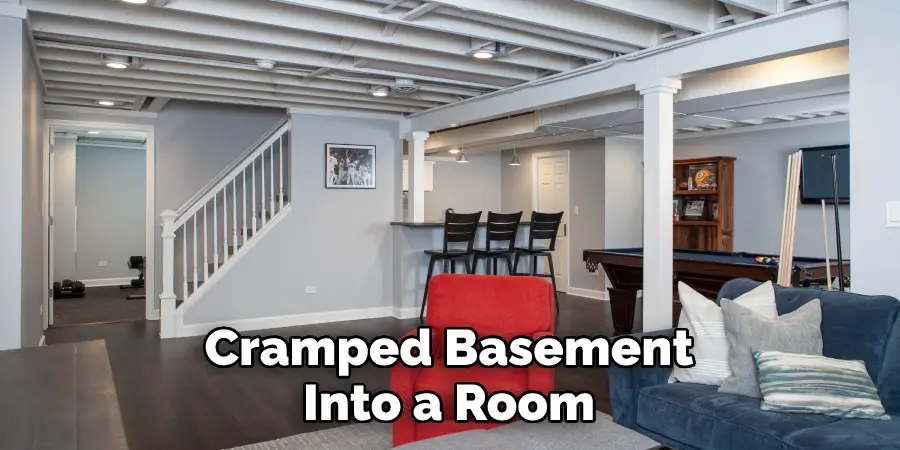
5 Additional Tips and Tricks
1. If you are considering painting your ceiling, choose a light color. Darker colors absorb light, making your basement seem even smaller.
2. You can add texture to your ceiling using a textured paint roller or other special tools for low ceilings. This will help draw the eye away from the room’s height and towards interesting patterns on the walls and ceiling.
3. Consider adding art pieces that hang long vertically along the walls instead of horizontally across them. This will create an illusion of higher ceilings than there actually are in the basement.
4. Take advantage of corner spaces when designing furniture for your low-ceilinged basement space – tall cabinets or shelves against two walls can make use of otherwise wasted corner space while making the room seem larger.
5. Add a few well-placed mirrors in your basement to reflect light and give the room a more open feel. Mirrors can be hung on walls or placed strategically near windows and doors, creating an optical illusion of a wider open space.
By taking into account these five tips, you’ll have no trouble finishing your basement with low ceilings. With the right design choices and creative tactics, you can make even the most cramped basements look spacious!
5 Things You Should Avoid
- Avoid installing large, bulky furniture. Bulky furniture will make the room feel even smaller and can be a safety hazard in low ceiling basements.
- Don’t forget to hang your curtains as high up on the wall as possible – this helps create an illusion of taller ceilings and maximizes natural light coming into the room.
- Be mindful when choosing lighting fixtures for your basement – try to avoid too big or bright lights, which could make the space seem even more cramped.
- Steer clear of any carpets or rugs that are too thick and luxurious; these will draw attention to the low ceiling height and should be avoided instead of thinner fabric options.
- If you have a drop ceiling, avoid hanging too many boxes or other objects from it, as this adds more weight to the structure and can cause potential damage.
By following these five tips, you’ll be well on your way to creating a finished basement with low ceilings that looks great and is safe for all occupants. With a bit of planning and creativity, even low-ceilinged basements can look stylish and inviting!
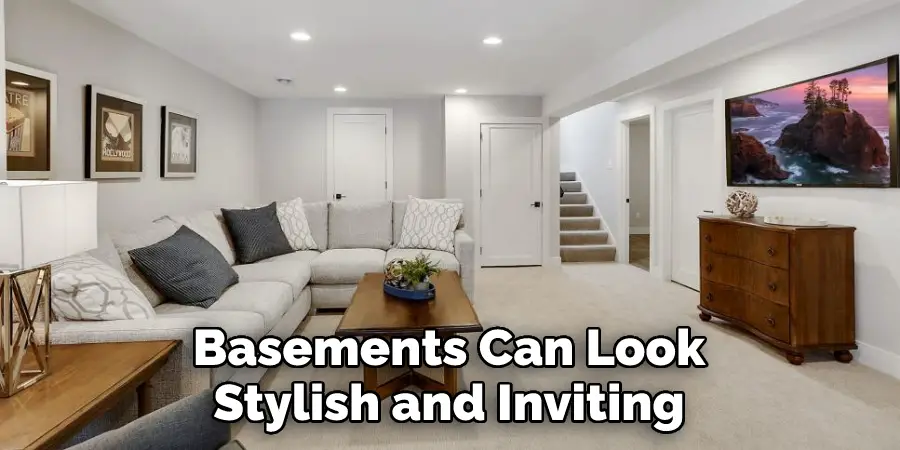
Conclusion
How to finish a basement with low ceilings definitely takes some planning and work, but it can be done with good results. It’s important to remember that the best results come when the ceiling is left exposed, and other details are used to create a stunning space.
Ensure you look for lighter colors that will help make the room seem brighter and taller, even in a lower space. Be sure to pay attention to airflow and lighting as well for ultimate comfort and convenience. With careful consideration of these key factors, you can enjoy an improved living area that adds both value and beauty to your home.
Remember, transforming a basement from an empty abyss into a usable living space will give you a great source of pride – plus extra useable space! So don’t be intimidated by projects this size – just strategize from the start and know what materials you’ll need up front, then tackle each step one at a time for a successful completion.

